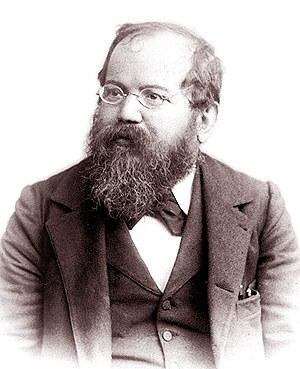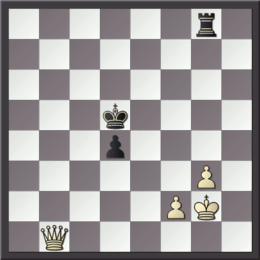|
Traité Des Amateurs
''Traité des Amateurs'' is the short name of the chess treatise ''Traité Théorique et Pratique du jeu des Echecs, par une Société des Amateurs'', published in France in 1786 and subsequently translated into German and English. A reviewer in 1830 wrote that: The ''Traite des Amateurs'', is one of the best practical works on Chess, extant. It contains a great number of beautifully played games, together with much solid information, and it is matter of regret that the scarcity of the book, prevents its being more generally used by the Chess student. ''Le Traité des Amateurs'' ''Le Traité des Amateurs'' is a chess treatise composed by a "Society of Amateurs" who were contemporaries of Philidor and all frequented the Café de la Régence in Paris. Of these, the strongest players were Bernard, Carlier, Leger and Verdoni. Philidor, who lived in London, took no part in writing the ''Traité des Amateurs'' (which embodies many criticisms and comments on his earlier book). Georg ... [...More Info...] [...Related Items...] OR: [Wikipedia] [Google] [Baidu] |
Giambattista Lolli
Giambattista Lolli (1698 – 4 June 1769) was an Italian chess player and one of the most important chess theoreticians of his time. He is most famous for his book ''Osservazioni teorico-pratiche sopra il giuoco degli scacchi'' ( en, Theoretical-practical views on the game of chess), published 1763 in Bologna. Born in Nonantola, Modena, he was one of the Modenese Masters. The checkmate pattern " Lolli's mate" involves infiltrating an opponents fianchetto position using both a pawn and queen, and is named after Giambattista Lolli. Openings Lolli's book contains analyses of chess openings, in particular the Giuoco Piano. Against the Two Knights defense, the line 1.e4 e5 2.Nf3 Nc6 3.Bc4 Nf6 4.Ng5 d5 5.exd5 Nxd5 6. d4 is named the Lolli Variation. In the King's Gambit the variation 1.e4 e5 2.f4 exf4 3.Nf3 g5 4.Bc4 g4 5.Bxf7+ is designated the Lolli Gambit. It illustrates the Italian masters' style of uncompromising attack, which clearly differs from the rather more strategic consid ... [...More Info...] [...Related Items...] OR: [Wikipedia] [Google] [Baidu] |
Initiative (chess)
Initiative in a chess position belongs to the player who can make threats that cannot be ignored, thus putting the opponent in the position of having to spend turns responding to threats rather than creating new threats. A player with the initiative will often seek to maneuver their pieces into more and more advantageous positions as they launch successive attacks. The player who lacks the initiative may seek to regain it through . Discussion Due to moving first, White starts the game with the initiative, but it can be lost in the opening by accepting a gambit. Players can also lose initiative by making unnecessary moves that allow the opponent to gain tempo, such as superfluous "preventive" (prophylactic) moves intended to guard against certain actions by the opponent, that nonetheless require no specific response by them. The concept of tempo is closely tied to initiative, as players can acquire the initiative or buttress it by gaining a tempo. The initiative is important in al ... [...More Info...] [...Related Items...] OR: [Wikipedia] [Google] [Baidu] |
First Move Advantage In Chess
In chess, there is a general consensus among players and theorists that the player who makes the first move (White) has an inherent advantage. Since 1851, compiled statistics support this view; White consistently slightly more often than Black, usually scoring between 52 and 56 percent. White's is about the same for tournament games between humans and games between computers; however, White's advantage is less significant in blitz games and games between lower-level players. Chess players and theoreticians have long debated whether, given perfect play by both sides, the game should end in a win for White or a draw. Since approximately 1889, when World Champion Wilhelm Steinitz addressed this issue, the consensus has been that a perfectly played game would end in a draw (futile game). A few notable players have argued, however, that White's advantage may be sufficient to a win: Weaver Adams and Vsevolod Rauzer claimed that White is winning after the first move 1.e4, while ... [...More Info...] [...Related Items...] OR: [Wikipedia] [Google] [Baidu] |
Richard Réti
Richard Selig Réti (28 May 1889 – 6 June 1929) was an Austro-Hungarian, later Czechoslovakian, chess player, chess author, and composer of endgame studies. He was one of the principal proponents of hypermodernism in chess. With the exception of Nimzowitsch's book ''My System'', he is considered to be the movement's foremost literary contributor. Early life Réti was born to a Jewish family in Bazin, Austria-Hungary (now Pezinok, Slovakia), where his father worked as a physician in the service of the Austrian military. His older brother Rudolph Reti (who did not use the acute accent) was a noted pianist, musical theorist, and composer. He is the great-grandfather of the German painter Elias Maria Reti. Réti came to Vienna to study mathematics at Vienna University."Memoir of Reti", in ''Reti's Best Games of Chess'', annotated by H. Golombek (Dover 1974). Chess career One of the top players in the world during the 1910s and 1920s, he began his career as a combinative ... [...More Info...] [...Related Items...] OR: [Wikipedia] [Google] [Baidu] |
Will To Power
The will to power (german: der Wille zur Macht) is a concept in the philosophy of Friedrich Nietzsche. The will to power describes what Nietzsche may have believed to be the main driving force in humans. However, the concept was never systematically defined in Nietzsche's work, leaving its interpretation open to debate. Usage of the term by Nietzsche can be summarized as self-determination, the concept of actualizing one's will onto one's self or one's surroundings, and coincides heavily with egoism. Alfred Adler incorporated the will to power into his individual psychology. This can be contrasted to the other Viennese schools of psychotherapy: Sigmund Freud's pleasure principle (will to pleasure) and Viktor Frankl's logotherapy (will to meaning). Each of these schools advocates and teaches a very different essential driving force in human beings. ''Kraft'' vs. ''Macht'' Some of the misconceptions of the will to power, including Nazi appropriation of Nietzsche's philosophy, ... [...More Info...] [...Related Items...] OR: [Wikipedia] [Google] [Baidu] |
Wilhelm Steinitz
William Steinitz (born Wilhelm Steinitz; May 14, 1836 – August 12, 1900) was an Austrian and, later, American chess player. From 1886 to 1894, he was the first official World Chess Champion. He was also a highly influential writer and chess theoretician. When discussing chess history from the 1850s onwards, commentators have debated whether Steinitz could be effectively considered the champion from an earlier time, perhaps as early as 1866. Steinitz lost his title to Emanuel Lasker in 1894, and lost a rematch in 1896–97. Statistical rating systems give Steinitz a rather low ranking among world champions, mainly because he took several long breaks from competitive play. However, an analysis based on one of these rating systems shows that he was one of the most dominant players in the history of the game. Steinitz was unbeaten in match play for 32 years, from 1862 to 1894. Although Steinitz became "world number one" by winning in the all-out attacking style that was comm ... [...More Info...] [...Related Items...] OR: [Wikipedia] [Google] [Baidu] |
Draw (chess)
In chess, there are a number of ways that a game can end in a draw, neither player winning. Draws are codified by various rules of chess including stalemate (when the player to move is not in check but has no legal move), threefold repetition (when the same position occurs three times with the same player to move), and the fifty-move rule (when the last fifty successive moves made by both players contain no or pawn move). Under the standard FIDE rules, a draw also occurs in a dead position (when no sequence of legal moves can lead to checkmate), most commonly when neither player has sufficient to checkmate the opponent. Unless specific tournament rules forbid it, players may agree to a draw at any time. Ethical considerations may make a draw uncustomary in situations where at least one player has a reasonable chance of winning. For example, a draw could be called after a move or two, but this would likely be thought unsporting. In the 19th century, some tournaments, notably ... [...More Info...] [...Related Items...] OR: [Wikipedia] [Google] [Baidu] |
Romanticism
Romanticism (also known as the Romantic movement or Romantic era) was an artistic, literary, musical, and intellectual movement that originated in Europe towards the end of the 18th century, and in most areas was at its peak in the approximate period from 1800 to 1850. Romanticism was characterized by its emphasis on emotion and individualism, clandestine literature, paganism, idealization of nature, suspicion of science and industrialization, and glorification of the past with a strong preference for the medieval rather than the classical. It was partly a reaction to the Industrial Revolution, the social and political norms of the Age of Enlightenment, and the scientific rationalization of nature. It was embodied most strongly in the visual arts, music, and literature, but had a major impact on historiography, education, chess, social sciences, and the natural sciences. It had a significant and complex effect on politics, with romantic thinkers influencing conservatism, libe ... [...More Info...] [...Related Items...] OR: [Wikipedia] [Google] [Baidu] |
Chess Theory
The game of chess is commonly divided into three phases: the chess opening, opening, Chess middlegame, middlegame, and Chess endgame, endgame. There is a large body of theory regarding how the game should be played in each of these phases, especially the opening and endgame. Those who write about chess theory, who are often also eminent players, are referred to as "theorists" or "theoreticians". "Opening theory" commonly refers to consensus, broadly represented by current literature on the openings. "Endgame theory" consists of statements regarding specific positions, or positions of a similar type, though there are few universally applicable principles. "Middlegame theory" often refers to maxims or principles applicable to the middlegame. The modern trend, however, is to assign paramount importance to analysis of the specific position at hand rather than to general principles. The development of theory in all of these areas has been assisted by the vast literature on the game. ... [...More Info...] [...Related Items...] OR: [Wikipedia] [Google] [Baidu] |
Chess Tactics
In chess, a tactic is a sequence of moves that each makes one or more immediate threats ─ that is, a Check (chess), check, a Glossary of chess#material, material threat, a Checkmate, checkmating sequence threat, or the threat of another tactic ─ which culminates in the opponent being unable to respond to all of the threats without conceding an immediate benefit to the opponent. Most often, the immediate benefit takes the form of a material advantage or checkmating attack; however, some tactics are used for defensive purposes and can salvage material that would otherwise be lost, or to induce stalemate in an otherwise lost position. Tactics are usually contrasted with Chess strategy, strategy, whereby the individual moves by themselves don't make indefensible threats, and the cumulative advantage of the moves takes longer to be capitalised on. In rough terms, the dichotomy can be summarised as tactics concerning short-term play and strategy concerning long-term play. Examples of ... [...More Info...] [...Related Items...] OR: [Wikipedia] [Google] [Baidu] |



